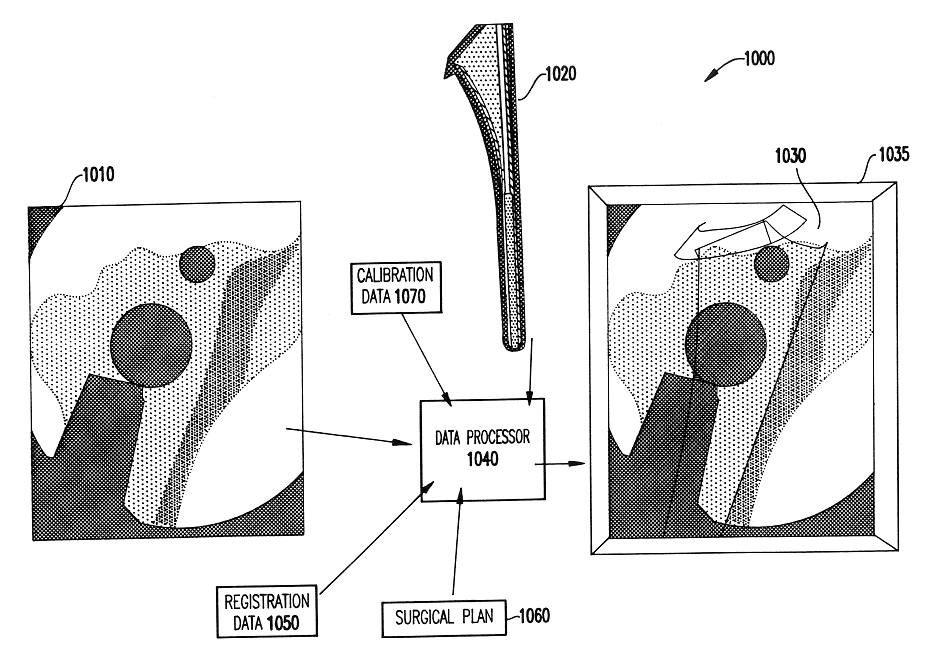System and method for fusing three-dimensional shape data on distorted images without correcting for distortion
a three-dimensional shape and image technology, applied in the field of robotic and medical imaging techniques, can solve the problems of inconvenient and costly patient removal of pins, no conventional technique teaches how to simulate post-operative conditions, and the insertion of pins requires minor surgery
- Summary
- Abstract
- Description
- Claims
- Application Information
AI Technical Summary
Benefits of technology
Problems solved by technology
Method used
Image
Examples
Embodiment Construction
Referring now to the drawings, and more particularly to FIGS. 1-8, there is shown a preferred embodiment of the method and structure according to the present invention.
Generally, the present invention resides in a system and method to intra-operatively provide the surgeon with visual evaluations of possible surgical outcomes ahead of time, the evaluations being obtained by merging intra-operative image data and pre-operative data, and being presented in a standard clinical fashion (such as augmented X-ray images) that is natural and easy for a surgeon to interpret.
The present invention differs from the invention in U.S. patent application Ser. No. 09 / 299,643 by omitting the step of correcting the geometric distortion of the X-ray image in the method of U.S. patent application Ser. No. 09 / 299,643 (e.g., step 2040 in FIG. 2 thereof) and other processing as described below.
That is, the step of correcting the geometric distortion of the X-ray image is omitted between the step of obtaini...
PUM
 Login to View More
Login to View More Abstract
Description
Claims
Application Information
 Login to View More
Login to View More - R&D
- Intellectual Property
- Life Sciences
- Materials
- Tech Scout
- Unparalleled Data Quality
- Higher Quality Content
- 60% Fewer Hallucinations
Browse by: Latest US Patents, China's latest patents, Technical Efficacy Thesaurus, Application Domain, Technology Topic, Popular Technical Reports.
© 2025 PatSnap. All rights reserved.Legal|Privacy policy|Modern Slavery Act Transparency Statement|Sitemap|About US| Contact US: help@patsnap.com

